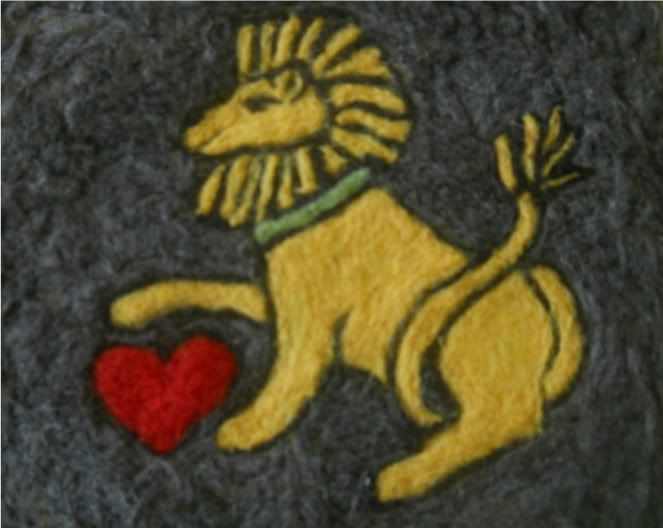I grabbed a bunch of randomness from my bead box, but I'm rather pleased with how it worked out. I had bought the silver plated plaques to decorate a Rus hat several years back and they have been staring at me ever since. I very rarely use silver, so I didn't have any great ideas, but it also meant that I wasn't saving them for any reason and didn't have to dither about whether this was the best use of them. Often taking things from my stash can be a negotiation with myself and I'm afraid to use the good stuff in case some better use comes along. Anyone else have that problem? I hadn't planned on having silver with this dress either, but I very much like the girdle, so I'm reconsidering the color scheme for the dress. Besides the silver plaques, which are Jill MacKay that I got on something like 90% off clearance, there are two shapes of flame jasper, some silverish beadspacers that I'd sorted out of a bulk lot that was supposed to be gold but didn't have good plating, some magnetic hematite rounds, glass pearls in both white and grey that I got for 70 cents a strand, and freshwater pearls dyed an iridescent blue/green/black that I got on an 80% off clearance. It's wonderful when all the super cheap clearance purchases come together and actually justify themselves and the fact that I have a stash. As I need about twice the beads for a girdle that a non-plus sized person needs, making a girdle is normally a significant outlay of money. This one wasn't so I'm rather proud of it for that reason alone.
Now, on to the fabric in the background. That's going to be the dress for Solstice. I've settled on doing a veste over a sottana, like this portrait of a lady and her little girl from the school of Veronese. I had considered doing the more common style with a doublet under the veste, but to be frank, I'm afraid of trying to fit the doublet. I've already got a sideback laced pattern that I love and fits, so this way I can concentrate on the veste. I'm going with the red for the outer dress. Now I just have to decide on what color I'm making the underdress. Black and steel grey are not my normal choices, but I'm sort of drifting that direction. I'm open to suggestions if anyone has any.
 |
| Via |















